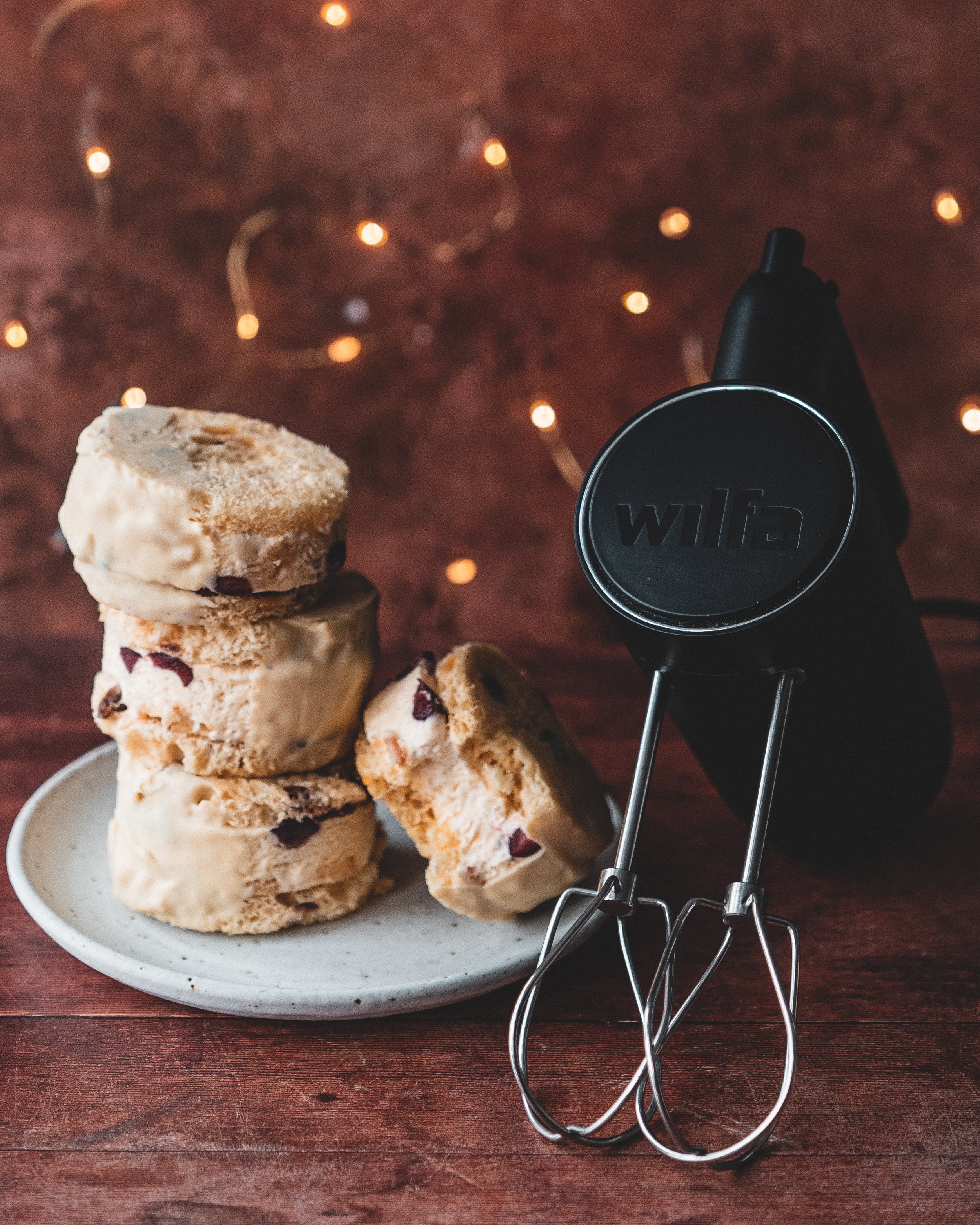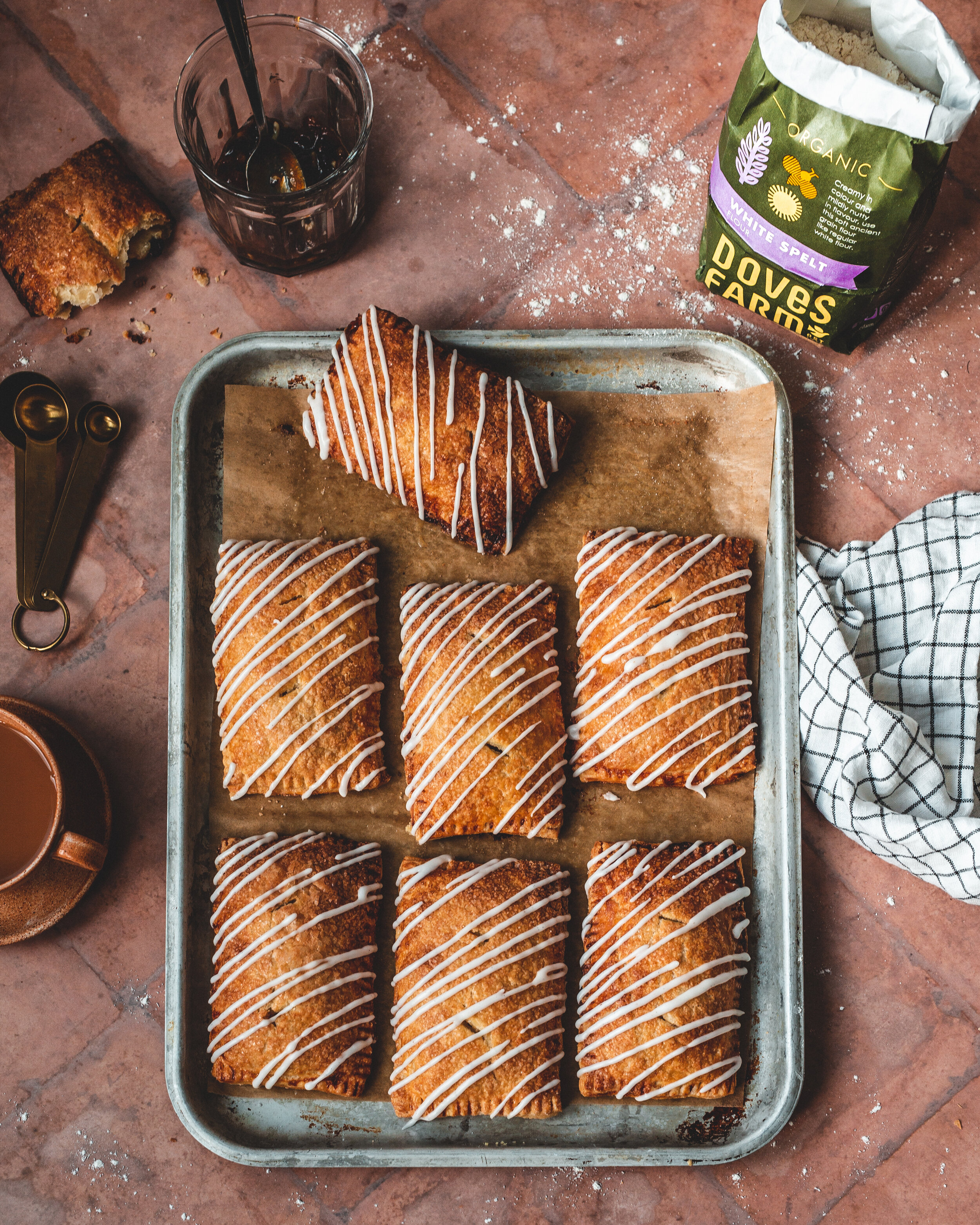This post is sponsored by Wilfa
Just because it’s winter doesn’t mean we can’t enjoy a frozen dessert; I’m of the firm belief that ice cream is an all weather affair. This particular frozen treat is a brilliantly festive semifreddo sandwiched with panettone. Semifreddo, half frozen in Italian, is a traditional no churn ice cream from Italy. Made with a whipped egg foam and whipped cream it’s brilliantly creamy and rich, flavoured with pieces of amaretto and frozen cherries. If you saw my video earlier this week on toasted milk powder, you can also add a tablespoon of that to the semifreddo to really boost the flavour. Once frozen the semifreddo is cut into discs and sandwiched between two pieces of panettone, a great use for the Christmas bread.
To make the semifreddo, I used my Wilfa Smooth Mix Hand Mixer. The mixer has Wilfa’s characteristic stylish design, like all there products, and of course brilliant function. It has a 5-speed action plus a boost button for when you need a little extra speed. For a hand mixer it also has a very impressive 500W motor meaning it has more than enough power. The thing that stands out for me though is how the mixer handles. Hand mixers are notorious for vibrating and over sustained use can be annoying to hold. The Wilfa hand mixer is much more stable and much nicer to use. I also think it would make a brilliant Christmas present, and using my code THEBOYWHOBAKES you can get 20% off!
Semifreddo
300ml double cream
2 large eggs
3 large egg yolks
125g caster
1 tsp vanilla bean paste
Few drops almond extract
1 tbsp toasted milk powder (optional)
50g soft amaretti cookies
100g frozen cherries, chopped
For the Sandwiches
1x750g loaf panettone
200g white chocolate
2 tbsp coconut oil
Lightly grease a quarter sheet pan or a 9x13 brownie pan and line the base and sides and with parchment paper.
Add the cream to a large bowl and whisk, using a Wilfa Smooth Mix Hand Mixer, until soft peaks form. Set aside for the moment.
Add the eggs, yolks and sugar to a separate large bowl and place the bowl over a pan of simmering water. Using the Wilfa Hand Mixer, whisk on low speed for about 6-8 minutes. Don’t worry about cleaning the beaters before whisking the eggs, since the egg yolks have fat the cream on them doesn’t matter. You want to whisk the mixture until it reaches 75C. This ensures the eggs are cooked but also helps us make a nice light foam. Remove the bowl from the heat and whisk on high speed for another 6-8 minutes until you have a pale and fluffy mixture that’s holds a ribbon when lifted from the bowl. Pour half of this egg mixture into the cream and use a spatula to lightly fold together. Repeat with the remaining egg mixture. Scrape this semifreddo mixture into the prepared tray and spread into an even layer. Crumble over the amaretti and scatter over the chopped cherries. Press a sheet of clingfilm onto the surface of the semifreddo and freeze for 8-10 hours or until firm.
Slice the panettone into 1cm thick slices and use a 8cm round cookie cutter to cut out 16 discs. Remove the semifreddo from the freezer and unmould it from the tray. Use the same cookie cutter to cut out 8 discs of semifreddo and sandwich together with two discs of panettone. Place back into the freezer whilst you prepare the white chocolate.
Note: don’t waste the leftover semifreddo and trimmings from the panettone. You can use both together to make a frozen trifle, the panettone off-cuts would also make a great bread pudding.
For the white chocolate, break it into small pieces and using either a microwave or a Bain Marie melt it together with the coconut oil. Pour into a small bowl and set aside until room temperature, liquid and pourable but without any real heat. Remove the ice cream sandwiches from the freezer and dip halfway into the chocolate mixture, allowing any excess chocolate to drop back into the bowl. Set down onto a piece of parchment paper and repeat with all 8 sandwiches. Once all have been dipped transfer to the freezer until ready to serve.











